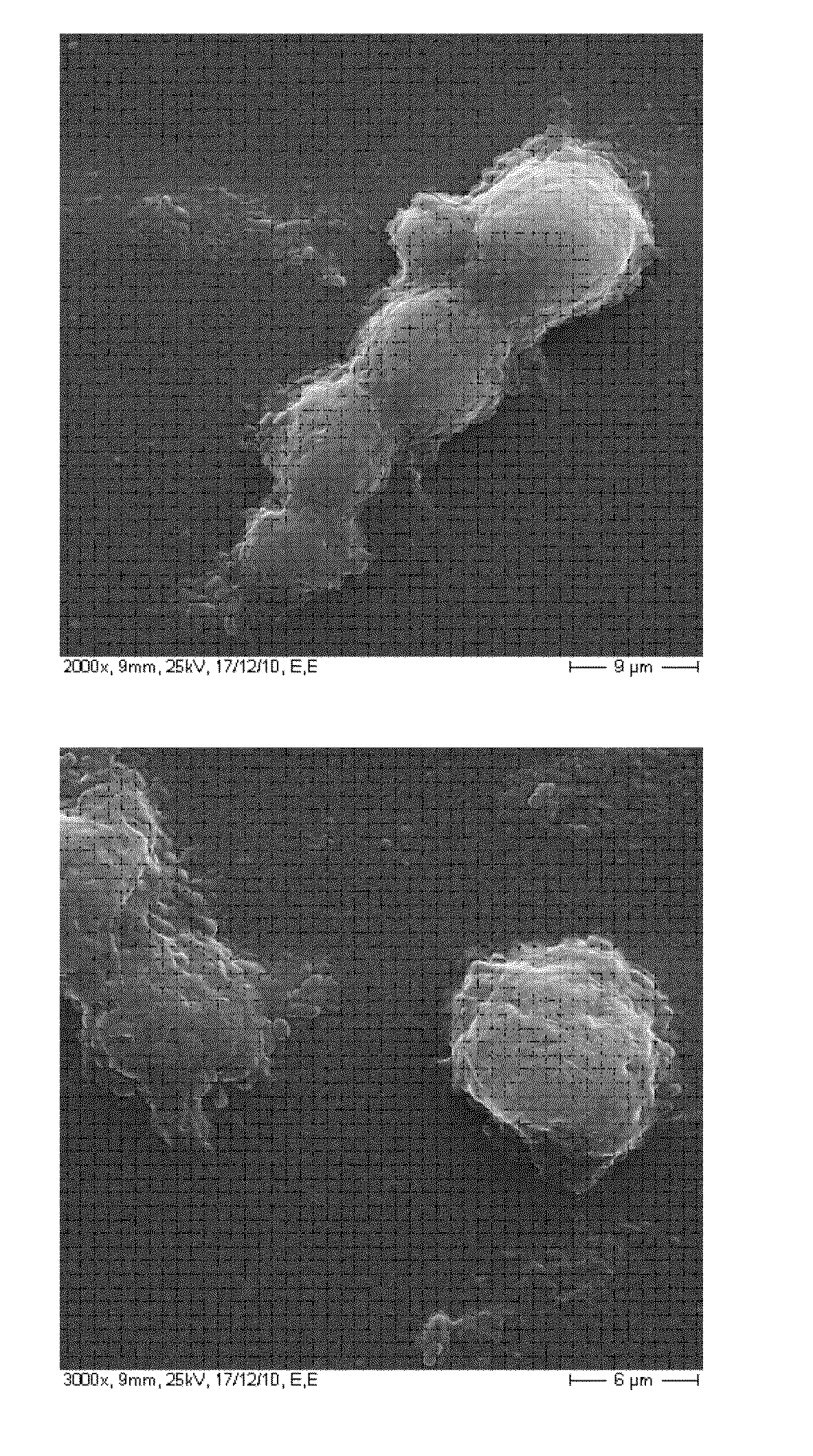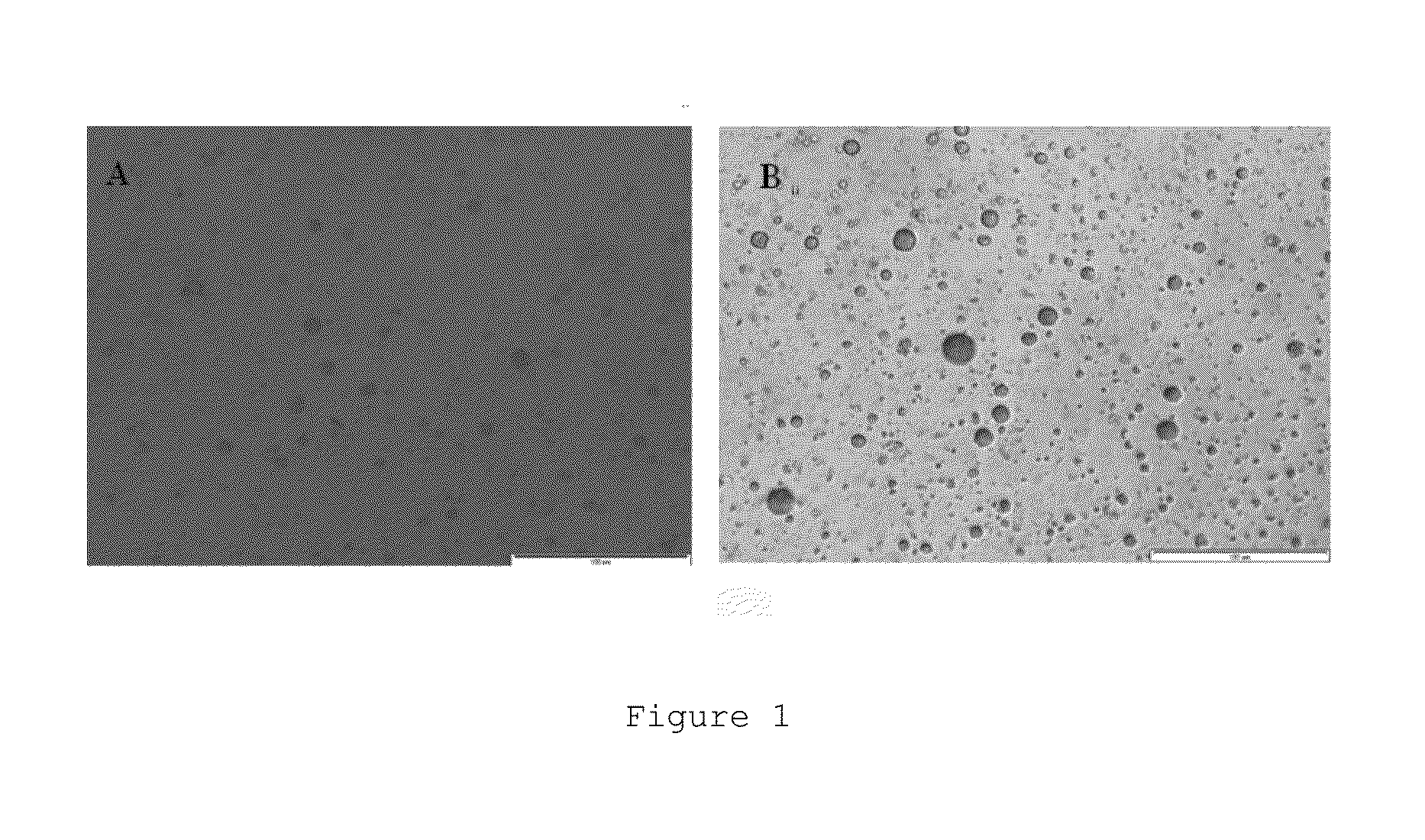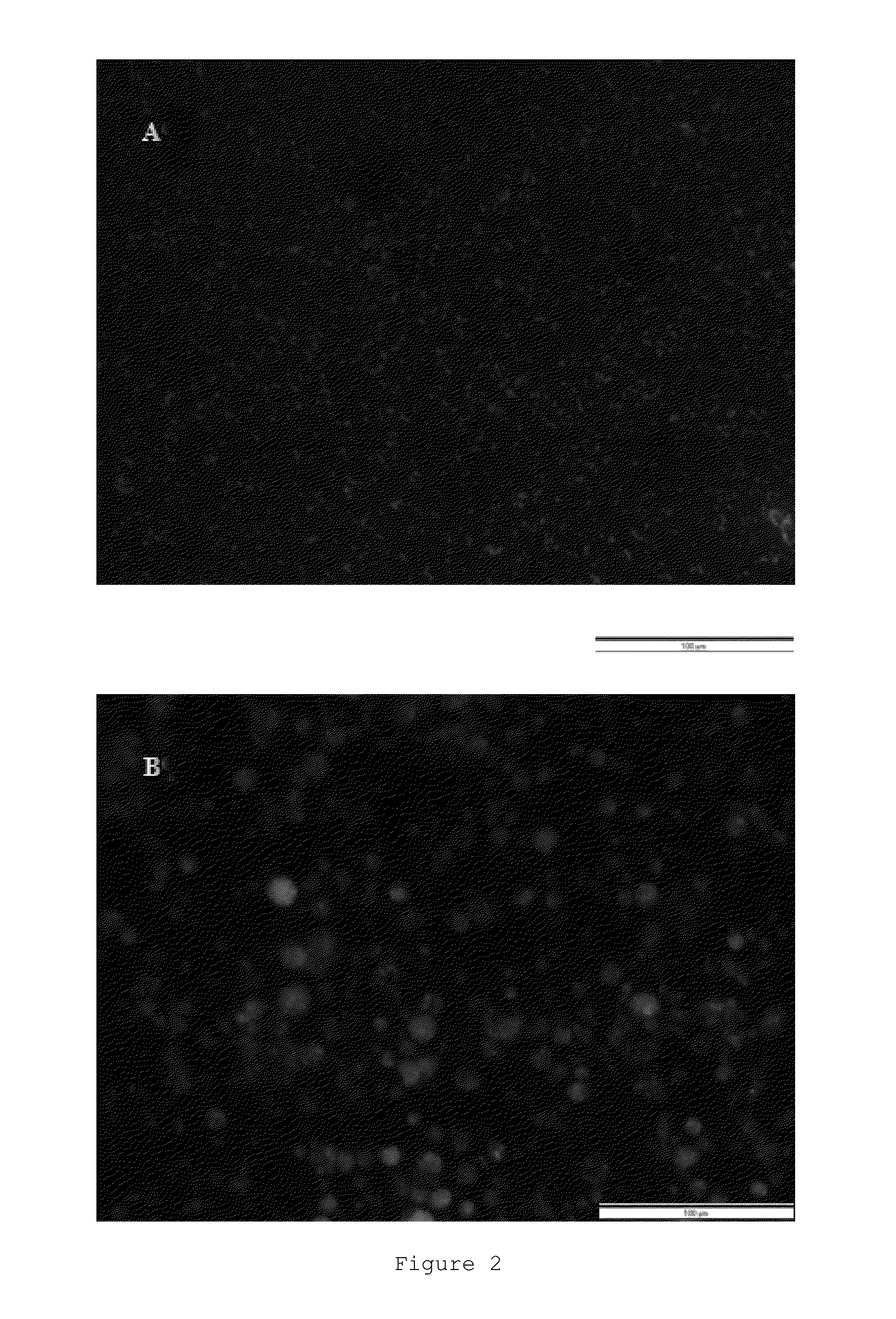Microparticles for encapsulating probiotics, production and uses thereof
a technology of probiotics and microparticles, applied in the field of microparticles for encapsulating probiotics, production, etc., can solve the problems of affecting the organoleptic properties and texture of the product, difficult to obtain large amounts of product, and low survival rate of the probiotics in these products during processing and/or preservation, so as to facilitate the release of probiotic bacteria and increase the shelf life of these foods or nutraceutical products.
- Summary
- Abstract
- Description
- Claims
- Application Information
AI Technical Summary
Benefits of technology
Problems solved by technology
Method used
Image
Examples
example 1
Preparation and Characterization of Casein and Chitosan Microparticles Containing Encapsulated Probiotic Bacteria of the Genus Lactobacillus plantarum
[0201]Different types of microparticles containing bacteria were prepared, all of them with casein as the base polymer modified with chitosan. The method for preparing said microparticles depended on the presence or absence of cross-linking agent and on the type of cross-linking agent used.
(Ap) Casein Microparticles Modified with Chitosan in the Absence of Cross-Linking Agent
[0202]1.5 mL of the bacterial suspension (1.2×1012 CFU / mL) described in Section III of the “General Methods” were added to 25 mL of a 10 mg / mL aqueous solution of sodium caseinate after being centrifuged and resuspended in a solution of 2% sucrose (w / v).10 mL of a chitosan solution having a concentration of 1.6 mg / mL prepared in an aqueous medium with pH 5.5-6 by means of adding 400 mg of chitosan to 250 ml of purified water under stirring and adjusting the pH wit...
example 2
Evaluation of the Stability of Encapsulated Lactobacillus plantarum Over Storage Time Under Environmental Conditions
[0225]The formulations Ap, Bp, Cp and Dp described in Example 1 were used to evaluate the survival of the bacteria under environmental conditions (25° C.) over time, using both fresh suspensions and freeze-dried products as a comparative control. FIG. 4 shows the obtained results.
[0226]The results clearly show that in the first month of study there is a loss of 7 logarithmic units in the counts of fresh bacteria in suspension, and in the third month, losses of 4.5 logarithmic units were observed in the case of bacteria in lyophilized form. However, when these probiotics were encapsulated in any of the casein and chitosan microparticles described in Example 1, their counts were kept constant, no significant losses being observed during the 8 months of study. These results confirm that the formulations described in the present invention allow at least increasing the bac...
example 3
Evaluation of the Resistance of the Encapsulated Probiotic Bacteria of the Genus Lactobacillus plantarum to Simulated Gastrointestinal Medium
[0227]The formulations Ap, Bp, Cp and Dp described in Example 1 were used to evaluate the resistance of the encapsulated bacteria in a simulated gastrointestinal medium following the method described in Section VII of the “General Methods”. FIG. 5 shows the results obtained for both formulations throughout the process, as well as the resistance obtained for free non-encapsulated bacteria. In the case of free bacteria (non-encapsulated lyophilized bacteria), the number of viable counts decrease gradually throughout the study ending with a mean loss of 4 logarithmic units. In the case of formulations Ap and Dp, the counts were kept virtually constant throughout the entire assay, being significantly higher than the freeze-dried product both at the end of the assay in gastric simulant (2 hours) and at the end of the assay in intestinal simulant (8 ...
PUM
| Property | Measurement | Unit |
|---|---|---|
| sizes | aaaaa | aaaaa |
| size | aaaaa | aaaaa |
| size | aaaaa | aaaaa |
Abstract
Description
Claims
Application Information
 Login to View More
Login to View More - R&D
- Intellectual Property
- Life Sciences
- Materials
- Tech Scout
- Unparalleled Data Quality
- Higher Quality Content
- 60% Fewer Hallucinations
Browse by: Latest US Patents, China's latest patents, Technical Efficacy Thesaurus, Application Domain, Technology Topic, Popular Technical Reports.
© 2025 PatSnap. All rights reserved.Legal|Privacy policy|Modern Slavery Act Transparency Statement|Sitemap|About US| Contact US: help@patsnap.com



